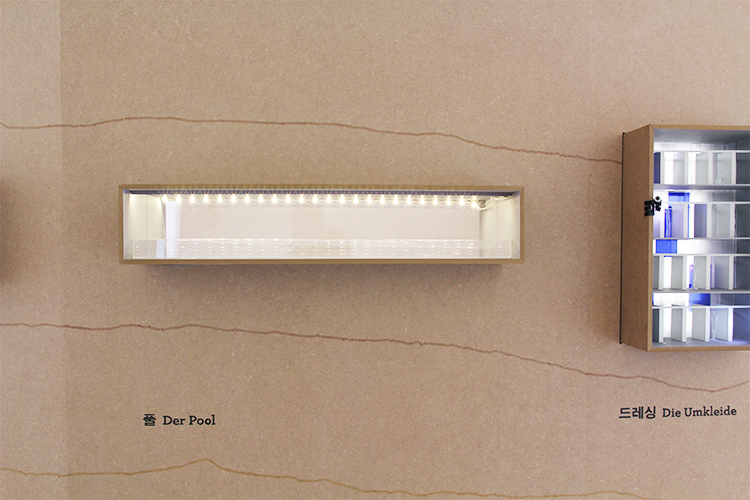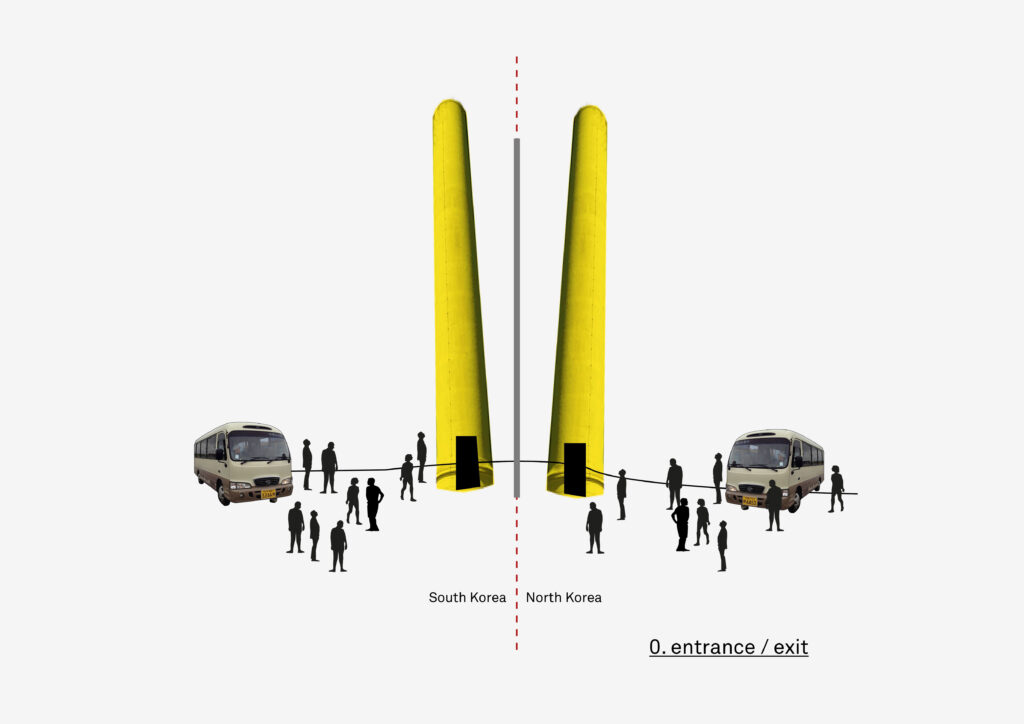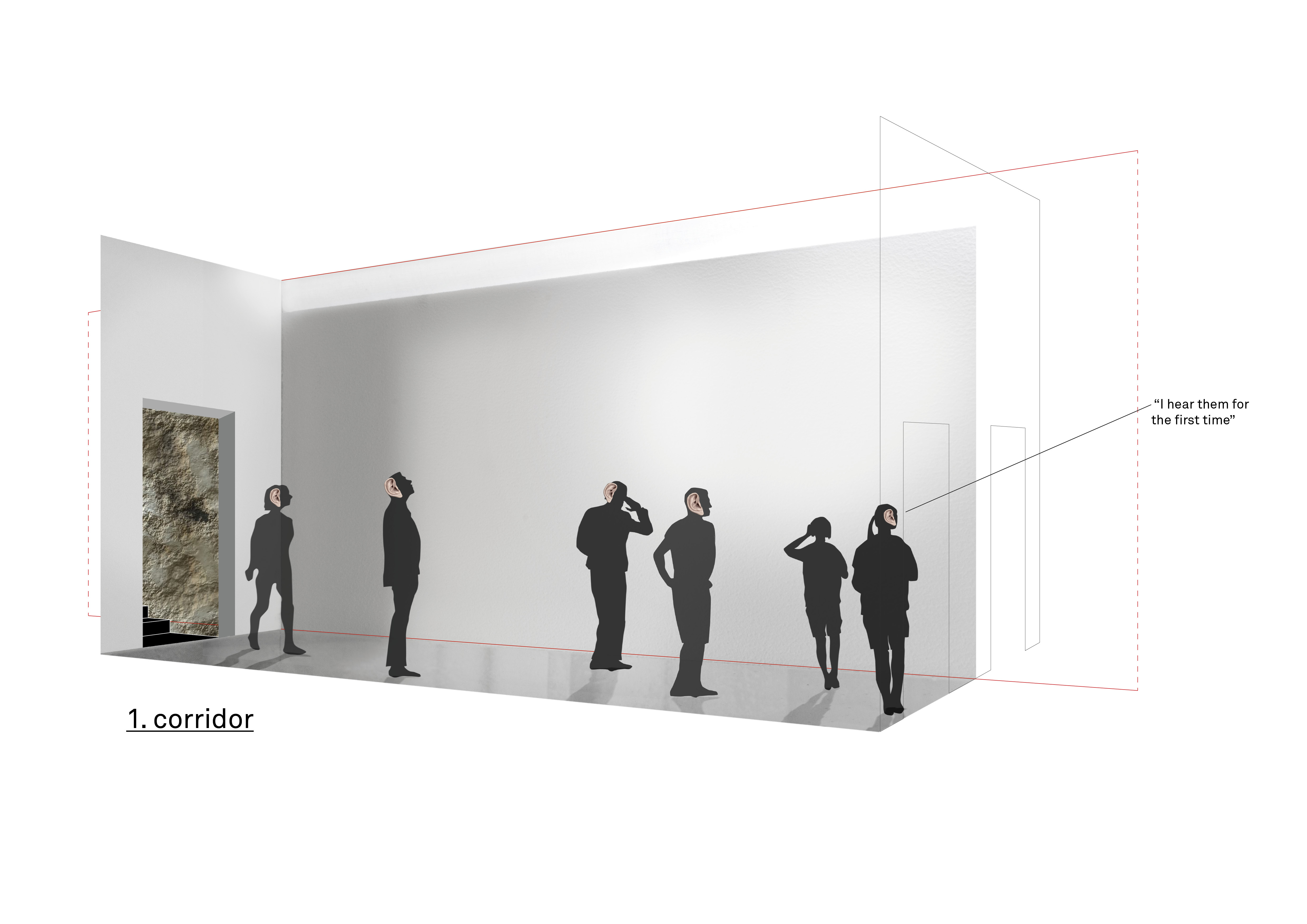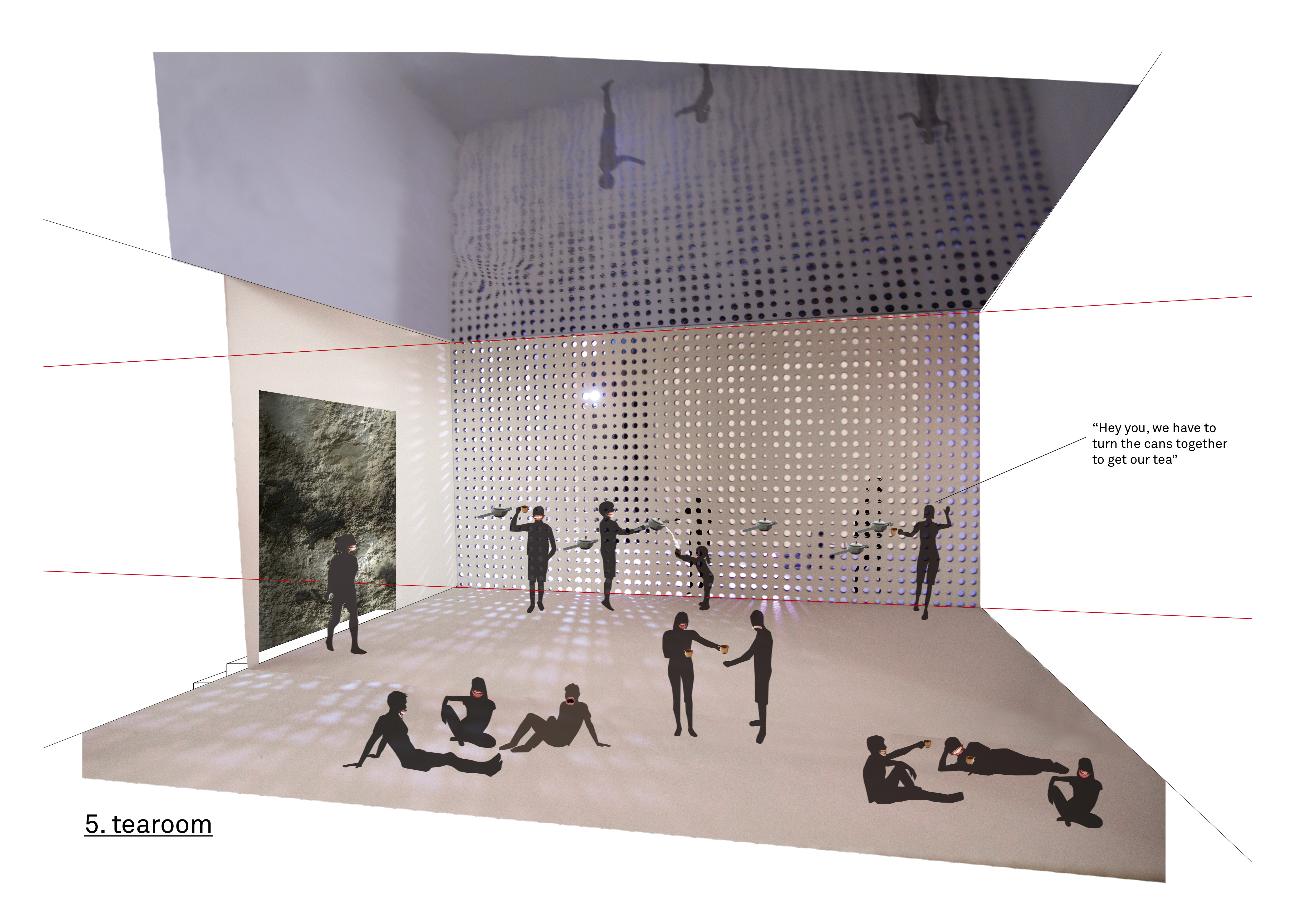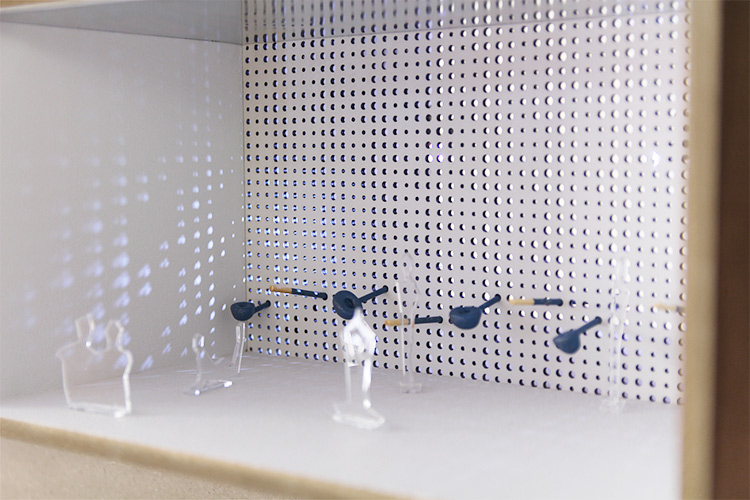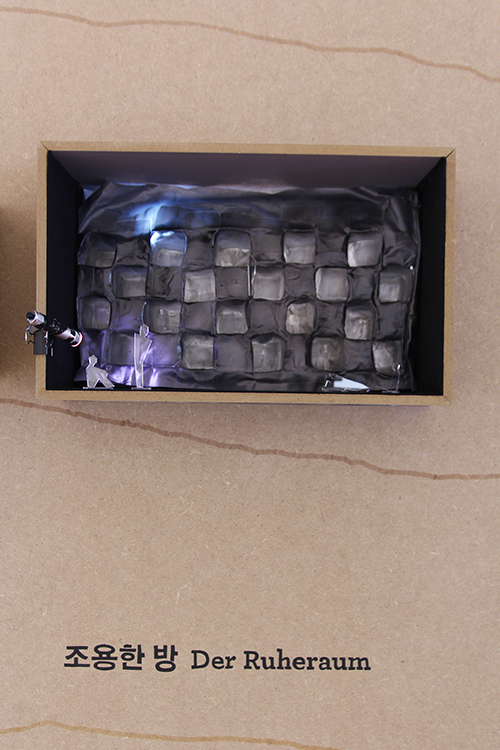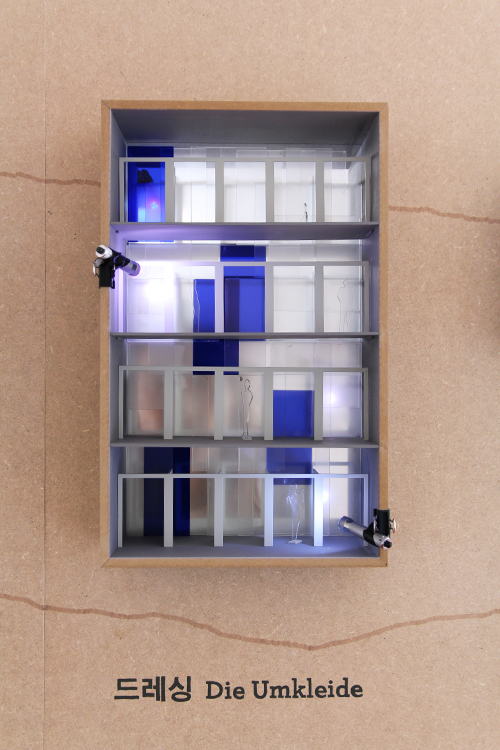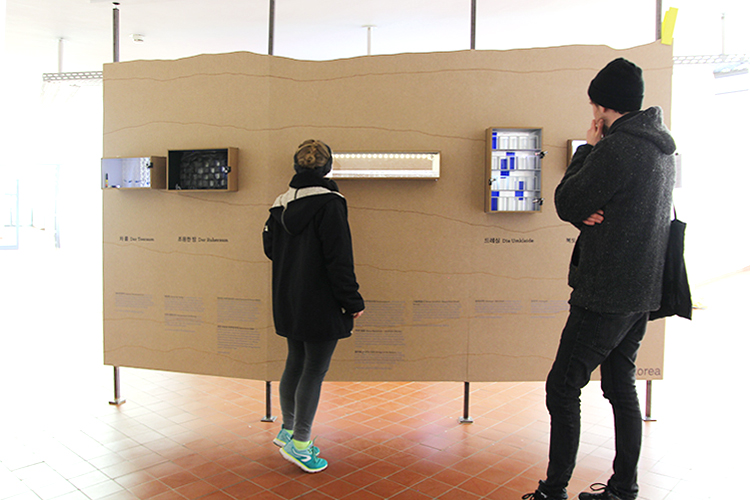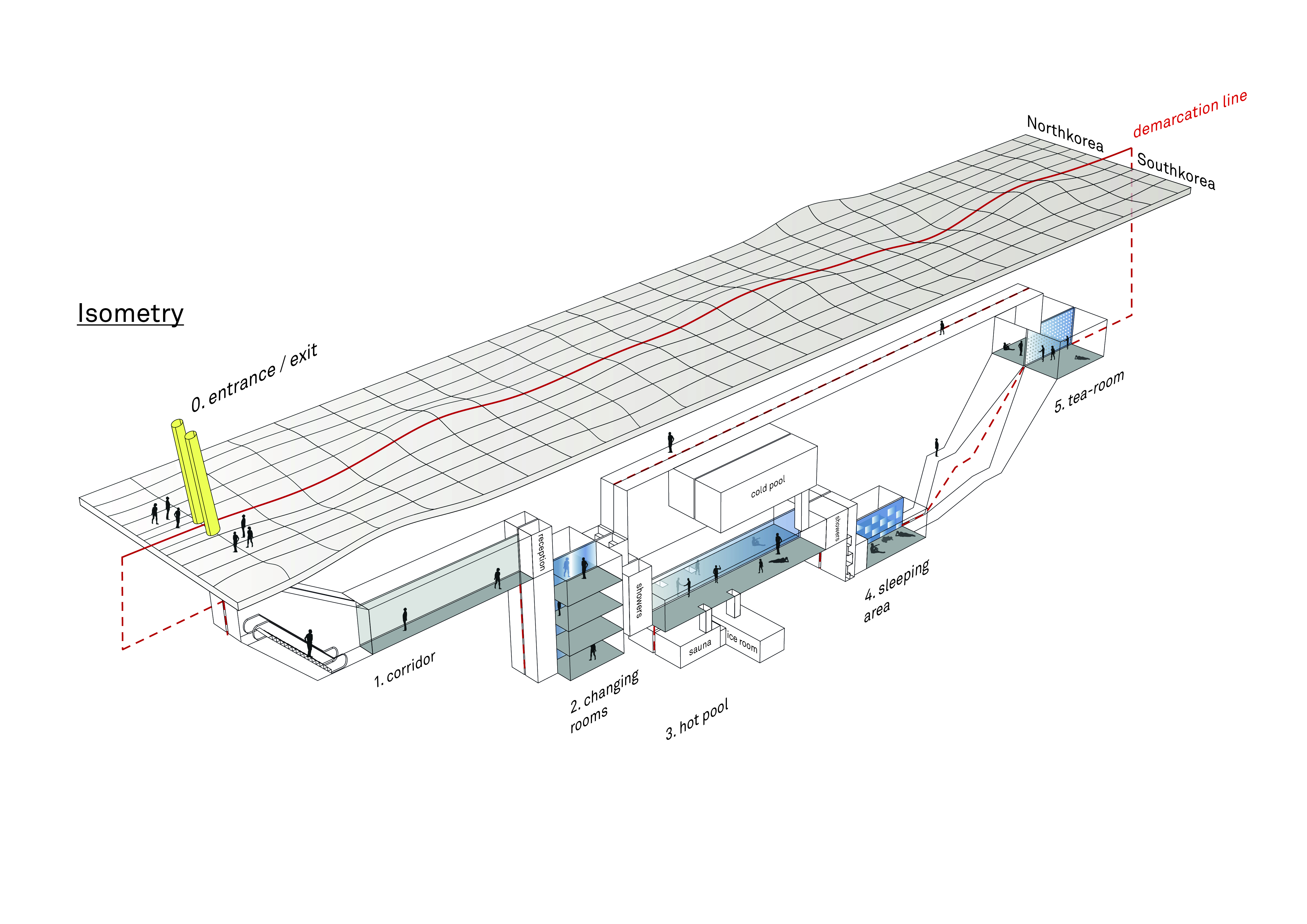
The isometry gives an overview of the different situations inside of the underground bathhouse »jimjilbang«
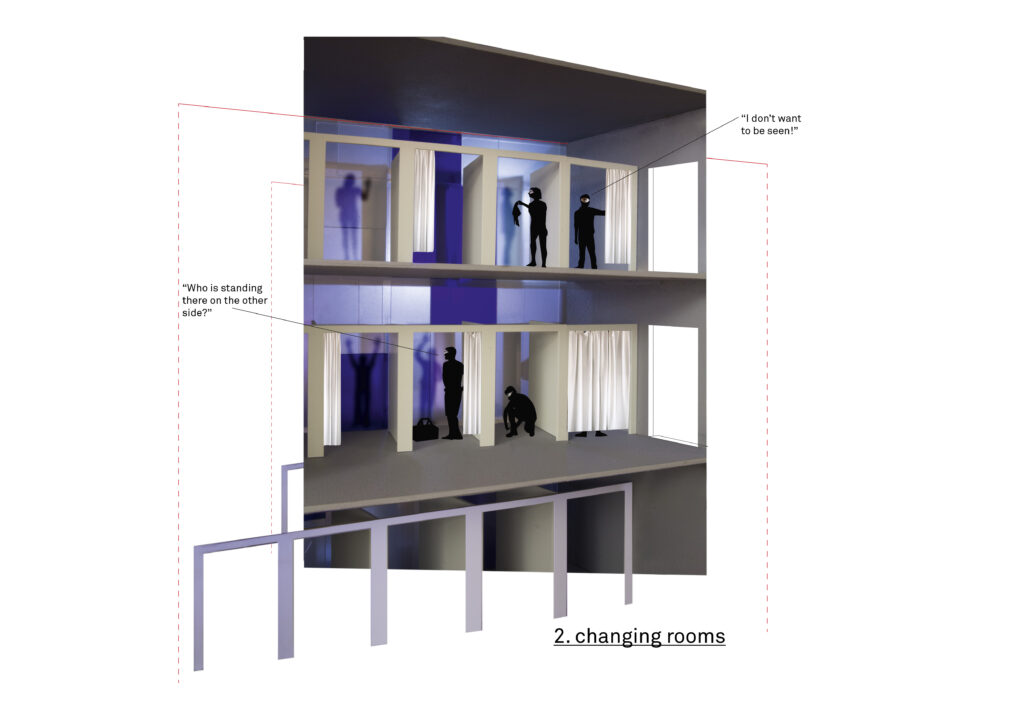
Situation 02, changing room: through frosted glass shadows of the people on the other side are visible
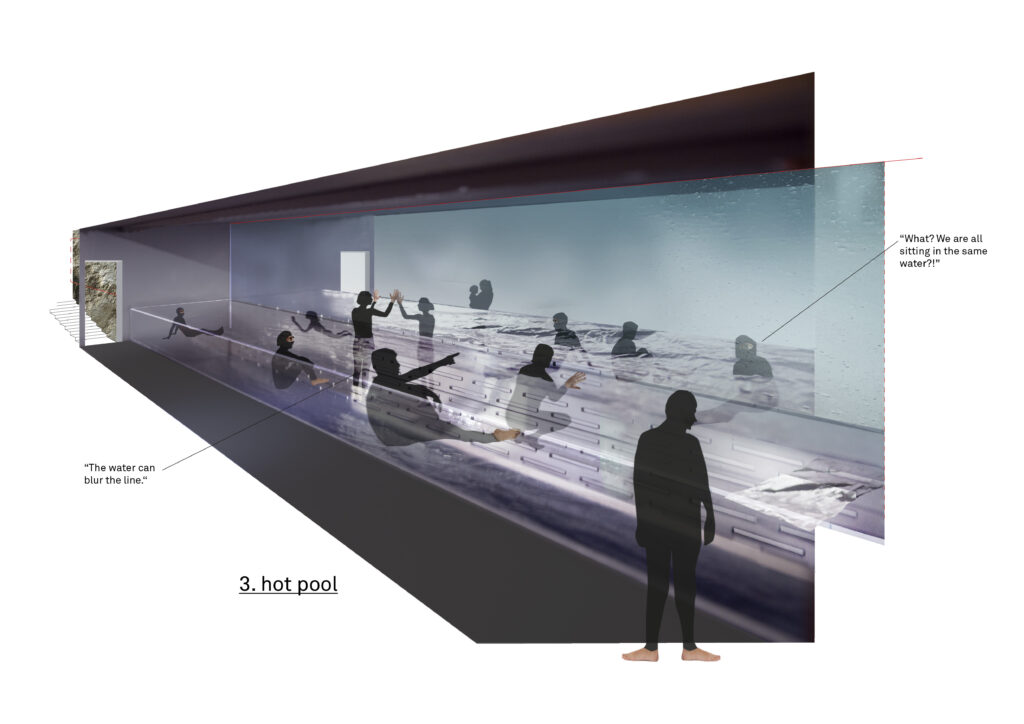
Situation 03, pool: the people see each other clearly through the seperating glass plate. The plate has slits so the water crosses the border and blurres it in a gently way – everyone is bathing together
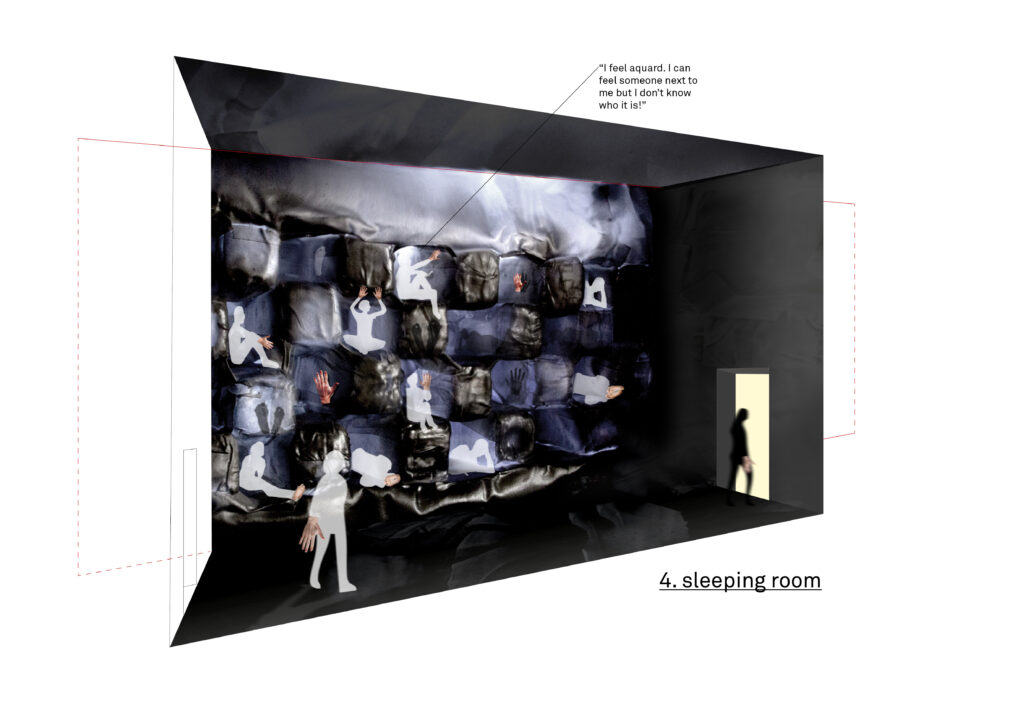
Situation 04, sleeping room: different sleeping cabins are folded into each other and cross the border in an almost invisible way. The material of the cabins is semi-flexible in some parts
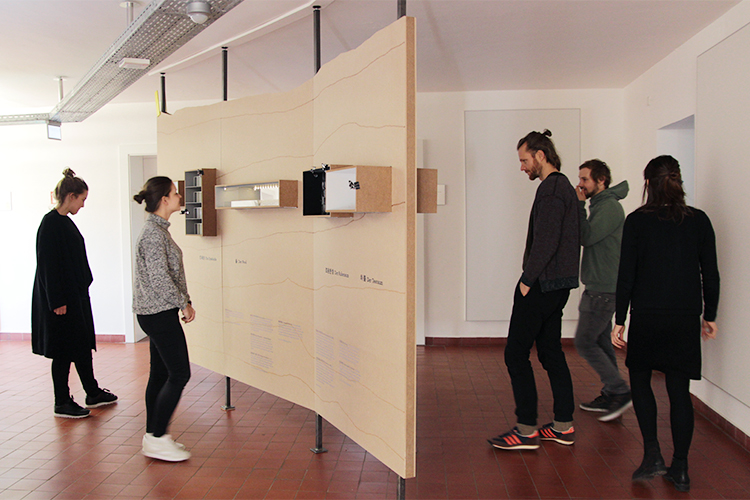
The exhibit / build border-section includes 5 mock-ups and additional auditive soundscapes to experience the different situations of the underground bathhouse
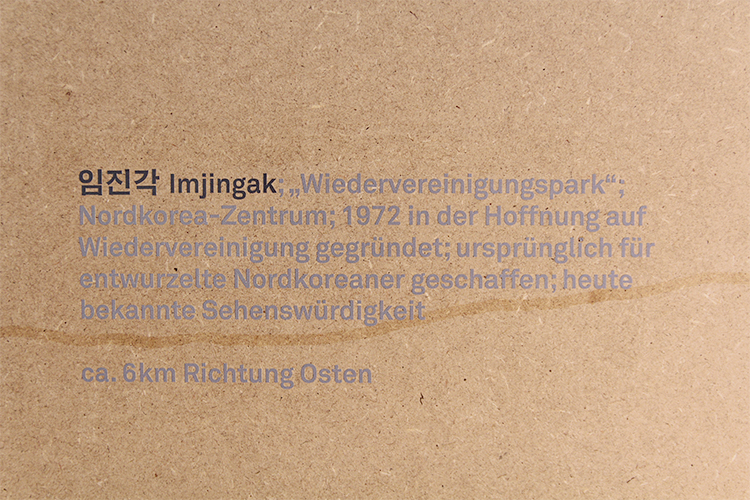
Further informations about the situations at the korean border are displayed for the visitors of the exhibit
jimjilbang
The conceptual design of the underground bathhouse »jimjilbang« creates awareness of the current handling of the hard border between North and South Korea and deals with the possibility of an approach. The bathhouse is an integral part of everyday life in the Korean culture. In this context, five architectural situations allow the negotiation of the rigid and separating border and thus create radically experienceable new types of (non-) encounter, communication and negotiation between the two sides. Jimjilbang is a building complex on the border between North and South Korea, with the demarcation line (DMZ) running through the building as a spatial separation. The users of the bathhouse stay on their side during the visit and experience different forms of border resolution when moving and using the areas. The spatial design of the bathhouse connects and separate at the same time while stretching and questioning the border. There is an interplay between the intensive experience of the users – a mixture of positive encounter and excessive demands. By eliminating the structural differences, as well as the individual outfits, the aboveground existing strong distinctions are temporarily reversed during the bathhouse visit.
The encounter situations taking place in the bathhouse were translated into and exhibit as a »build border cut«. The visitor can choose one of the two sides of the exhibit. Five models enable to experience the situations in the corridor (listening), in the changing room (starting to see), in the pool (seeing and feeling), in the sleeping room (feeling) and in the tea room (talking, exchanging) through interaction with one another. Each situation focuses on a different type of encounter, from listening to each other through feeling too communicating verbally. The exhibit displays further location-specific informations on North and South Korea and a soundscape in Korean creates the auditory level.
The research and spatial concept was submitted to the »Borders – DMZ Underground Bathhouse« competition.

The isometry gives an overview of the different situations inside of the underground bathhouse »jimjilbang«

Situation 02, changing room: through frosted glass shadows of the people on the other side are visible

Situation 03, pool: the people see each other clearly through the seperating glass plate. The plate has slits so the water crosses the border and blurres it in a gently way – everyone is bathing together

Situation 04, sleeping room: different sleeping cabins are folded into each other and cross the border in an almost invisible way. The material of the cabins is semi-flexible in some parts

The exhibit / build border-section includes 5 mock-ups and additional auditive soundscapes to experience the different situations of the underground bathhouse
and scenography
flex – Beckmann & Nikoleit GbR
Hamburg
